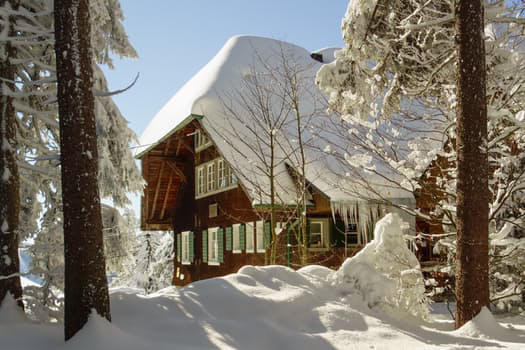
The Process of Closing Down Your Cabin
Closing down a vacation cabin at the end of a long, relaxing summer is important to insure harsh winter weather doesn’t play havoc on your cabin (and wallet). Not to mention it will make opening up your cabin in the Spring much more enjoyable and less timely. We want to help by providing this handy checklist as a guide.
The Cabin
- Make sure the water to your summer cottage is cut off at the source. Winterize plumbing; bleed pipe and water heater lines. If water is to remain on, winterize pipe lines to prevent freezing.
- Protect sink, bathtub, and shower drain traps by pouring about 1 cup of plumbing antifreeze down each drain.
- If you have a wood stove, be sure to clean it out, close the damper, inspect the chimney for needed maintenance and oil the hinges.
- Turn off electricity to the vacation cabin if there are no electrical items that will remain on or you can just unplug unused electrical appliances.
- If your summer cottage has central air conditioning, cover the outside condenser; if you’ve a window air conditioning unit, weatherize it well with insulation and plastic.
- Cover windows with plywood or plastic in areas with heavy snowfall. This prevents snow and ice from building up on window ledges, which can later melt and seep into your vacation cabin, or cause damage to the wood frame.
- Clean gutter rain spouts and other drainage systems so they will work properly keeping water away from your cabin.
- Check foundation and roof air vents to insure they are clear.
- Inspect the roof for damaged shingles and replace them if necessary.
- Winter is a great time for septic tank maintenance; add a commercial septic treatment or enzyme product to aid in breaking down solids.
- Weatherize external features such floodlights, patio, and water spigots.
- Trim overhanging branches that risk dumping extra snow and ice onto the roof.
Under the Cabin
- Remove all garbage that has been stored under the cottage and take it to the dump. This improves air and water flow and removes potential homes for the critters.
Spread mothballs liberally around the support posts to deter mice and other wildlife from trying to enter the cabin. Fill all holes with steel wool.
Other Items
Canoes and Kayaks
Stack the canoe and kayak on sawhorses or on a rack that is out of view from the lake or the road. Chain them together with a good lock.
Outdoor Tables
Move the picnic table inside the cottage if you have room. It preserves the table and gives you something to place boxes on, otherwise cover and secure for protection.
BBQ and Propane Tank
Clean the BBQ and disconnect it from the propane tank. Store them in a protected place.
Lawnmower, Chainsaw and Weed Whacker
- Run them until you burn off all the existing fuel.
- Clean the equipment thoroughly.
- Inspect and clean the air filter
- Spray all moving parts with WD-40 or Quick Lube.
- Store the equipment in a locked shed.
Leaving the Cabin
- Review the checklist to make sure everything has been done.
- Take photos of everything. In the unfortunate event of fire, theft, or weather damage, it will make the process with the insurance company go more smoothly.
- Do a final inspection of the property.
- Check and lock all outbuildings.
- Take the keys, phone, computer, and garbage.
- Lock the cottage.
These tips on how to winterize your vacation home will go a long way in preventing cold weather problems, and when properly winterized a great way to save on fuel costs. Taking the time to properly winterize your cabin will pay off!








